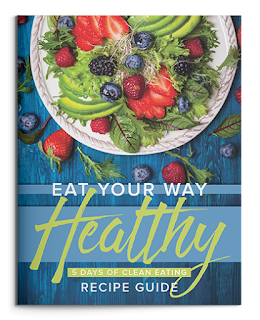A cording to some nutritional experts Your body responds uniquely to food -- your fuel is based on your genetics, biochemical makeup, family history, and your own interaction with your environment. So its believed you will advance your health (and looks) by discerning your Nutritional Type .
The science behind Nutritional body Typing is a system that customizes nutrition based on the way your body reacts to food. Your Nutritional Type determines your individual nutritional requirements and dictates your individual responses to what you eat and drink.
foods and individual nutrients do not behave the same way in two people with different Nutritional Type/
That certainly explains why some healthy foods that make other people energetic (and slim) might make you unhealthy, sluggish, bloated, and heavier. And why, no matter how much you try to stick to foods you've been told are 'healthy', or even organic, you may still not feel as good as you'd like to.
There is a reason for this. It's the result of a giant factor outside your control -- your metabolism
Then, when you factor in environmental stresses that can cause changes in your metabolism and temporarily override your genetics, your personal 'Mission Control' loses control -- unless you know your Nutritional Type .
However, once you discern your Nutritional Type , and understand your own unique characteristics, you will start choosing foods that move you away from weight issues, disease, accelerated aging... and towards optimal health and your naturally ideal weight
Carb Types
Carb Types normally feel best when most of their food is healthy carbohydrates. Yet, there are major differences between classes of carbs such as vegetables and grains. With Nutritional Typing you will discover which carbs are best for your unique physiology.
Protein Types
Protein Types operate best on a low-carbohydrate, high-protein and relatively high-fat diet (healthy fat that is). These ratios are detailed for you in your Nutritional Typing profile to help you make the wisest food choices.
Mixed Types
Mixed Types require food combinations somewhere between carb and protein type groups. This type requires quite a bit of fine-tuning and listening to your body, making it the most challenging type of the Nutritional Typing types.
Nutritional Typing (NT) is derived from a scientific method of customized nutrition, developed from studying your major body control systems. Clinical observations of hundreds of practitioners working with more than 60,000 people through the past 20 years provided us with critical feedback on what works and what does not.
In addition to eating the right quality foods for your body, believe it or not, we discovered that it is not enough just to make the right food choices... It is equally important to eat your foods at each meal in the right order!
Many leading Protein Types should eat their meat first. Carb Types should eat their vegetable first. Mixed Types should eat their meat and vegetable together.
When your food is consumed this way, digestive and nutritional efficiency will improve dramatically, shown by:
- Improved meal satisfaction
- No need for snacks between meals
- No more food cravings
Timing of Your Food
- We have learned that it is not only the food you eat but the actual order that you eat your food that can have a major impact on how you respond to that meal.
One of the most important aspects of Nutritional Typing (NT) relates to food quality. NT advocates the urgency of consuming the highest quality food available.
I advise two important points:
Eat fresh, locally grown, organic food whenever possible.
Eat as much of your food raw as possible, as it helps in preserving the nutrient's vital energy, so your body can use it.
If you do cook your food (which we know most people will), please use our low-temperature guidelines as much as possible to minimize heat damage to your food. If you are familiar with the differences between raw and pasteurized milk, you will appreciate the similarity with cooking your food
Supplementation
Nutritional Typing (NT) focuses primarily on using food for your cellular fuel, and only using supplements when indicated for specialized conditions.
Process-Orientation
- NT is simple and easy to implement. But it also includes an element of process-orientation, as opposed to a one-time diagnosis... and also very conscious, aware eating.
Bear in mind that Nutritional Typing is not another diet.
GET MY FREE CLEAN EATING GUIDE SIGN-UP FOR THE MONTHLY NEWSLETTER
http://www.mercola.com/downloads/bonus/nutritional-typing/report.htm
Test http://www.naturalhealthyellowpages.com/metabolic/self_test.html
Low Cooking temperature guidlines
https://metabolichealing.com/properly-preparing-your-food-low-temperature-cooking-guidelines/
























